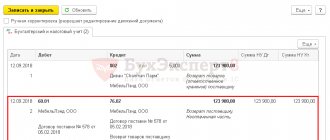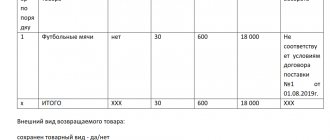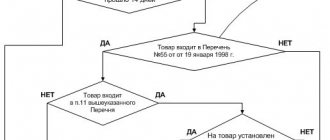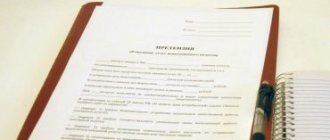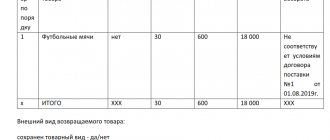Who is protected by consumer law?
A consumer is a person who buys a product for personal purposes: for himself, for his family, as a gift. Everyone else buys to resell. Lawmakers believe they will protect themselves. Therefore, the seller’s increased liability arises only in the first case.
Example: buyer - consumer
The man bought a table and four chairs in the Provence style. When lifting into the apartment, the movers scratched the furniture. The buyer asked to return the money and add penalties at an increased rate along with compensation for moral damage - according to the rules for consumers. He bought a table and chairs to have dinner with his family in the kitchen.
Example: buyer is not consumer
The man bought two tables and eight chairs in the Provence style. He indicated a coffee shop on the delivery order form. A week later, the chairs became loose, and guests of the establishment complained about them. The buyer decided to return the product. He can only count on payment and compensation for damages if he provides evidence. Consumer rules do not apply.
What happens if the buyer does not agree with the results of the examination
If the buyer does not agree with the conclusions of the examination, he can challenge it in court. In this case, the buyer can turn to another expert, bring his opinion to the court, and include the costs of the examination in the amount of the claim. Or the buyer will ask the court to conduct a re-examination.
If the store evades participation in the examination ordered by the court (does not provide the experts with the goods or the necessary documents), then the court may recognize the fact that the goods were sold defective - clause 3 of Art. 79 Code of Civil Procedure of the Russian Federation.
If the court makes a decision in favor of the buyer, all costs of the examination carried out by the buyer or ordered by the court will be recovered from the store.
The article is current as of 08/04/2021
What is a product shortage?
A defect is a non-compliance of a product with the purpose of use, description or mandatory requirements, for example, GOST. The chair is wobbly, which means you can’t sit on it - this is a drawback. The buyer ordered a white chair on the website, but they delivered it in ivory color - this is also a drawback.
Disadvantages are problems with a product that the buyer was not warned about. When the seller warns, he declines responsibility. Children's shoes from a thrift store, the label of which says they are worn out, are not defective.
Significant disadvantages are when the product cannot be repaired, or it can, but it is expensive and time-consuming. The entire length of the table top is cracked - there is no point in repairing it, it needs to be replaced. Because repairs cost as much as a new table.
Returning a product without defects is a separate situation, which we will discuss in another article. For offline sales, Art. 25, for online sales - art. 26.1 of the Consumer Rights Law.
Return of low-quality goods to the supplier if a defect is detected immediately upon acceptance of the goods
In this case, the purchasing organization may simply not accept the damaged goods.
In this case, it is enough to correct the invoice TORG-12 - without documenting the return of low-quality goods to the supplier.
That is, if the supplier is ready to take back expired products, then from the TORG-12 consignment note issued by the supplier, the purchasing organization deletes the necessary items - those items that are defective.
Please note that corrections in the receipt document must be made in the presence of the supplier or his representative - a forwarder or driver, vested with the rights of a financially responsible person.
The specified person must sign next to the crossed out item and pick up the defective product.
In addition, the supplier must not only accept the defect back, but also adjust the invoice for the purchasing organization downward and send it to the purchasing organization within 5 business days, since less goods were actually purchased.
At the same time, in the invoice, in the adjustment lines, the supplier indicates those goods that he must accept from the buyer.
Note that in practice another option is often used, namely, additional delivery of quality goods at another time, but without paperwork. That is, the purchasing organization accepts the entire delivery, signing the invoice without adjustments. And the supplier delivers the missing quality goods a little later. This is a common case when the buyer has established a trusting relationship with the supplier.
Consumer rights in case of shortage of goods
If the buyer finds a defect in the product, he has the right to present a claim to the seller under Art. 18 of the Law on Consumer Rights:
- replace the product;
— make a commensurate discount on payment;
— repair the product or compensate for repair costs;
— accept the goods back and return the money.
Requirements are made during the warranty period. If nothing is said about it in the documents and on the label - within a reasonable period of two years. Art. 19 of the Law on Consumer Rights.
It is the buyer who chooses the requirement, not the seller. It is impossible to limit rights in a sales contract, user agreement on the site, rules for holding promotions and sales, warnings such as “promotional goods cannot be exchanged or returned” - Art. 16 of the Law on Consumer Rights.
The seller, at his own expense, brings large items and items weighing more than 5 kg to the store. In other cases, the buyer himself returns the goods.
In addition to claims directly for the product, the buyer has the right to ask for full compensation for losses. Due to a defect in the coffee machine, the white tablecloth was damaged. Then the seller is obliged to pay for dry cleaning. But only if the buyer shows the receipt and proves that the stain was from that same unfortunate coffee.
The term for resolving issues of losses and payment of money is 10 days - Art. 22 of the Law on Consumer Rights.
How to identify a deficiency
When the consumer insists on a manufacturing defect, and the seller suspects that the reason is improper operation, an examination is carried out. Any organization with a specialist who understands the specifics of a particular product will do. Both parties may be present.
The seller pays for the examination. If it turns out that the buyer is at fault, the seller is relieved of responsibility. And the buyer is obliged to compensate for the cost of the examination. But after the guarantee, the buyer pays for the examination. And if he is right, you must compensate him for his expenses.
The seller is obliged to satisfy the requirements within the time period specified by law. For delays, an impressive penalty is imposed in the amount of one percent of the price of the goods per day - Art. 23 of the Law on Consumer Rights.
Features of the technology
Technical complex goods are coffee machines, robotic vacuum cleaners, laptops - the full list is specified in the Decree of the Government of the Russian Federation dated November 10, 2011 No. 924. If less than 15 days have passed since the purchase, such goods can be returned; if more, they can only be repaired.
How is the examination carried out?
The examination should answer a number of questions (depending on the buyer’s claims):
- Do the stated characteristics correspond to the real ones?
- Does the product really have the defect that the buyer is referring to?
- Are the identified defects acceptable or significant?
- If there is a defect, what caused it? Was it a production issue or was it due to improper use?
- Does the defect significantly reduce the quality of the product?
What should be in the conclusion after the examination, read here.
An important question from those listed above is how the defect arose. If the reason is a manufacturing defect, incorrect transportation or careless storage in the store, the buyer is not responsible for such a defect in the product. If the reason is due to the actions of the buyer (improper operation, physical impact, etc.), then you cannot count on compensation or return of the goods.
Another difficult point is proving that the information about the product does not correspond to its real characteristics. In this case, it will be necessary to collect documents indicating the parameters of the product so that experts understand what to compare the actual results with.
How to replace a product with the same or similar one
The replacement rules are written in Art. 21 of the Law on Consumer Rights.
The seller exchanges the defective product with a new one. It also gives a new warranty.
The replacement times are as follows:
- general - seven days from the date when the consumer returned the product to the store;
- sent the goods for examination - twenty days;
— delivery to the store from the supplier is required — a month;
- a store in the Far North - immediately after the next delivery of goods “from the mainland”.
If the replacement takes longer than seven days, the seller provides the buyer with a similar product for use free of charge within three days. The rule does not apply to furniture, hair dryers, toasters, electric kettles - the full list is in government decree No. 2463.
For goods of the same brand, prices are not recalculated.
For a similar product, the seller recalculates the price. The product is more expensive - the buyer pays extra, cheaper - he receives the difference from the store’s cash register - art. 24 of the Law on Consumer Rights.
Exchange of goods is a return plus a purchase. The buyer writes a return application with his passport data. The seller issues a return receipt for the old receipt and a new receipt for the new product.
How much time does the buyer have to make a claim?
The buyer may make claims due to defects in the product during the warranty period or expiration date. If such are not established, then in Art. 19 of the Law of the Russian Federation states that the period is considered to be 2 years.
The shelf life begins from the day the goods are transferred to the buyer, unless otherwise provided by the contract. For seasonal goods, this period is shifted until the beginning of the season.
The date of the onset of climatic seasons is fixed by regional legislation where the store operates. For example, in Moscow the winter season lasts from November 1 to March 1, and the summer season from May 1 to September 1.
If the buyer has left you a claim related to a defect in the product, you must respond within 10 days - this period is specified in Art. 22 ZPPP.
How to pay repair costs
Payment for repairs
The buyer brings a check for repairs, the seller pays the money within ten days - Art. 22 of the Law on Consumer Rights.
Repair
The repair rules are established by Art. 20 of the Law on Consumer Rights.
The seller and buyer agree on the repair period and sign an agreement. The period must be minimal and in any case no longer than forty-five days. During this time, the seller orders parts, selects materials and carries out work.
If the repair takes longer than seven days, the seller provides the buyer with a similar product for use free of charge within three days. In addition to the repair of furniture and some household appliances - the full list is in government decree No. 2463.
The seller deducts the repair time from the warranty period. Along with the repaired product, the seller issues the buyer a document with the start and end dates of the repair, a list of defects eliminated and the parts used. The parts will have a new warranty.
How much does the examination cost?
The cost of the examination depends on the pricing policy of the organization, the type of product and the number of parameters that experts evaluate. In general, the price will be affected by the number of goods, their location (can the item be brought to the laboratory, or does a specialist need to come to your home), the number of documents that the buyer has in his hands (with data about the product), the period of work, and so on.
We remind you once again that in the case of an independent examination, the buyer initially pays for it independently. But if the presence of a defect, shortcoming, or incorrect information during the sale is confirmed, the seller will compensate all expenses.
How to return money for an item
The buyer returns the goods to the store, writes a return application, indicates the defects and his passport data. Save the application, the tax office will ask for it when it checks the tax calculation.
The buyer paid by card - non-cash refund, in cash - return the same and issue a refund receipt.
The seller returns to the buyer the entire amount that he paid - Art. 24 of the Law on Consumer Rights. "Full amount" means:
— No discounts for loss of presentation.
— If the buyer took the goods on credit, the seller returns the amount of the paid loan and interest.
— If the buyer paid with consumer credit money, the seller returns the entire amount with interest and other payments to the bank.
The seller returns the money within ten days from the date when the buyer handed over the goods to the store - Art. 22 of the Law on Consumer Rights.
Why is it necessary to respond to the buyer in any case?
When a person contacts a store with a request for a return or another complaint, a legally correct procedure must be followed. Accepted the application, sorted out the essence of the complaint, satisfied or refused the consumer, and retained proof of the response.
The consumer can come to the store with an appeal, write a statement or complaint. From the point of view of the law, all this is pre-trial claims. You are obliged to answer it.
If the buyer files a claim in court and wins, then in addition to reimbursement of the cost of the goods and other expenses, the business will be fined 50% of the awarded amount (Article 13 of the PZPP).
It doesn’t matter what the consumer wrote in the appeal. Even if the content of the complaint seems absurd to you, it is necessary to give an answer to it.
The timing of the response, respectively, and the timing of the decision, depend on the essence of the application. There are several of these.
In what cases replacement may be required
There are many situations when a supplier cannot deliver the goods specified in the contract. The most common reasons:
- the winning bidder agrees to supply products according to the specific characteristics specified in the technical specifications and the contract, but during the execution of the work, the manufacturer stopped producing the goods, and they ran out of stock;
- at the time of submitting the application and concluding the contract, the product was present on the market, but at the start of work its delivery to the market was temporarily suspended for some reason, as a result of which the supplier cannot supply this particular product;
- the application specified a specific product, the cost of which has increased significantly, but there are analogues on the market at reasonable prices;
- the application contained incorrect indicators or the technical specifications were initially drawn up with errors, which were later transferred to the contract.
When is it possible to improve the properties of a product?
It should be remembered that it is not possible to change the characteristics of the product during bidding. This can only be done after concluding a contract with the winner, during the fulfillment of obligations. Let's look at this in more detail.
If the customer agrees with the supplier’s initiative before signing the contract, then the customer may face administrative liability under Part 1 of Article 7.32 of the Code of Administrative Offenses of the Russian Federation for concluding a contract on terms that were not approved in the procurement documentation. In this situation, the administrative fine is 1% of the NMCC and is imposed either on the official - from 5,000 to 30,000 rubles, or on the organization - from 50,000 to 300,000 rubles.
If the supplier insists on replacing the subject of the contract before its conclusion, then the customer can send information about it to the Register of Unfair Suppliers (RNP), considering such actions as evasion of obligations.
If the supplier, after concluding a contract, realizes that it cannot provide the goods, work or service stated in the contract, it can send the customer an offer to replace the goods with a detailed explanation of why the new product is better. This is usually formalized by a letter detailing the intended “improvement.”

